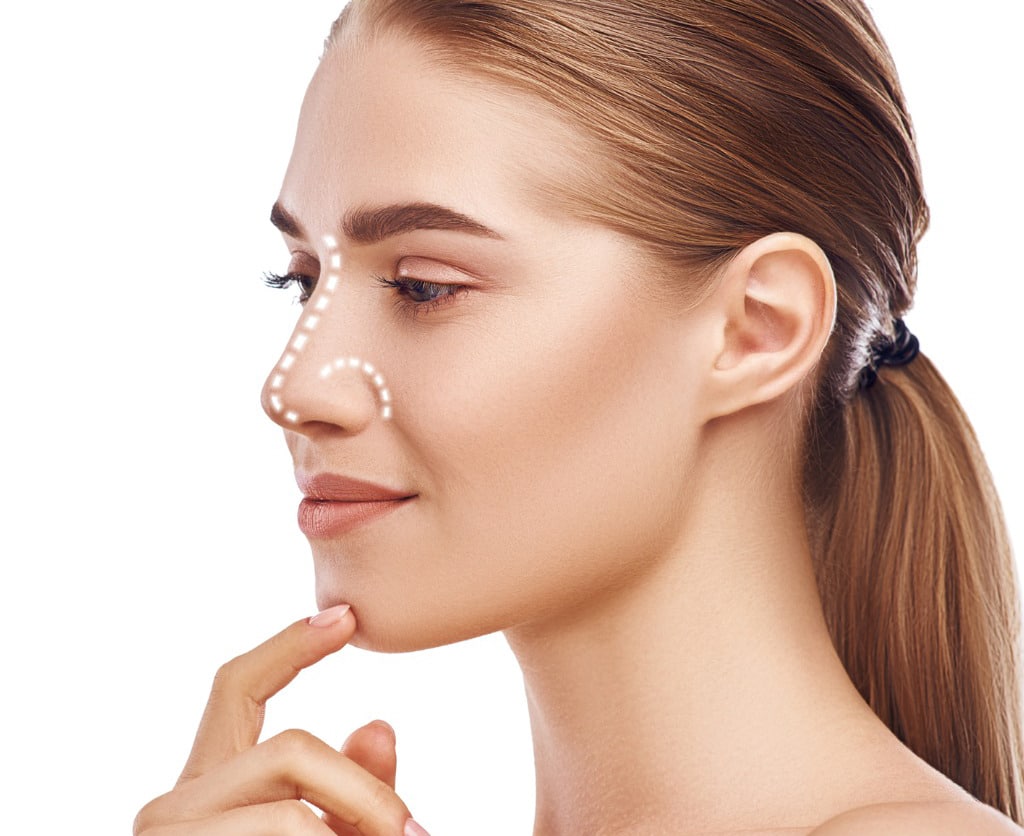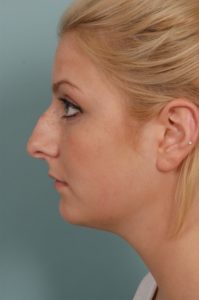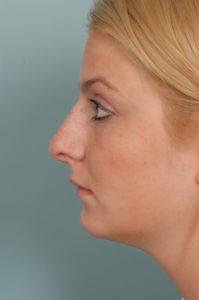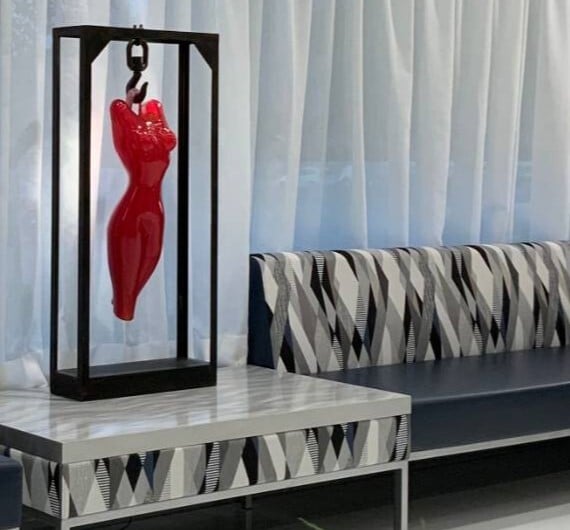*Individual results may vary
What is Rhinoplasty?
One of Long Island’s most common plastic surgery procedures- rhinoplasty surgery. Commonly referred to as a nose job, a rhinoplasty is performed to reshape, recontour and define the nose. This surgery may reduce or augment a person’s nose, remove a hump, narrow nostril width, change the angle between the nose and the mouth, or correct injury, birth defects, or other problems that affect breathing. Rhinoplasty is usually an outpatient procedure performed under either local or general anesthesia and lasts one to two hours, or occasionally longer for more complex deformities.
What are the goals of Rhinoplasty surgery?
Rhinoplasty is an excellent procedure for achieving the following:
- Balance the size of the nose with the other facial features
- Modify the width of the nose at the bridge
- Improve the nasal profile, including removing humps or depressions
- Contour a nasal tip that is too large, “boxy,” drooping or upturned
- Change the angle between the nose and the mouth
- Narrow and reshape the nostrils
- Correct asymmetry or deviation
- Correct a deviated septum
Who are the ideal candidates for a nose job?
The best candidates for rhinoplasty:
- Are at least 13 years old
- Have finished facial growth
- Are generally healthy
- Do not smoke
- Are seeking rhinoplasty for personal reasons, not pressure from others
- Have realistic goals for the procedure
How is Rhinoplasty surgery performed?
Rhinoplasty procedures are usually an outpatient procedure performed under IV sedation or general anesthesia. Surgeons use one of two techniques when performing nose surgery. In a closed rhinoplasty, incisions are made within the nostrils. In an open rhinoplasty, the incision is made across the columella, the tissue between the nostrils. The remaining incisions continue inside the nose, as with closed rhinoplasty.
With both methods, the bone and cartilage is sculpted to the desired shape. Any additional cartilage needed to augment the nose can often be taken from the septum.

If the patient has a deviated septum, the surgeon will adjust the septum and the inner structures of the nose to improve breathing. Then the tissues are re-draped and stitched closed. If the patient desires nostril reshaping, this is done as the final stage of rhinoplasty. The entire procedure generally lasts one to three hours, depending on the complexity of the problem. The entire procedure generally lasts one to two hours.
Open or Closed Rhinoplasty, which is better?
One might think that a closed rhinoplasty is better than an open rhinoplasty because the open technique involves a scar on the outside of the nose and there is more surgical dissection. The fact is that the small scar that crosses the columella (the bridge of tissue between the nostrils) can only be seen if you look under then nose itself, and even then, is often very difficult to see. To verify this, please visit the rhinoplasty photo gallery and look to see if you can see the scars, even in the photos that are taken looking up the nose, specifically taken to demonstrate the scar. The fact is that the Open Rhinoplasty Technique gives an unprecedented view of the nasal bony and cartilaginous skeleton that cannot be achieved using the closed technique. It also gives the surgeon access to perform a whole host of surgical maneuvers to better give you a more natural result with rhinoplasty.
Open rhinoplasty also excels in providing the surgeon the opportunity to perform non-destructive maneuvers as he contours your nose. Destructive maneuvers cannot be reversed during surgery. If the surgeon is not happy with the way a particular change looks, he cannot go back. Non-destructive changes are reversible. If the surgeon doesn’t like the way a particular change looks on the nose, he can “go back” and eliminate the maneuver or modify it. An example of this is the numerous non-destructive suturing techniques to reshape the nasal cartilages when altering the nasal tip. The open technique permits the best possible visualization of a change in the cartilage while that cartilage lays “in-situ” (in its natural position). In closed rhinoplasty, often the cartilage must be “delivered” outside the nose to be altered, but now the cartilage is not in its normal position within the nose.
Dr. Epstein prefers the open rhinoplasty technique in the vast majority of cases. It is his belief that this technique offers the best opportunity to achieve natural looking results with the least amount of downtime.*


How Can I Prepare for My Rhinoplasty Surgery?
Preparing ahead of time for your rhinoplasty procedure can help reduce your risk of complications and ensure both a successful nose surgery and recovery. To prepare for your rhinoplasty surgery, we recommend you:
- Consult with your primary doctor about stopping any medications that may interfere with your rhinoplasty procedure.
- Get a lab test to ensure you are healthy enough for a complication-free surgery.
- Quit smoking at least six weeks before your rhinoplasty procedure.
- Avoid taking blood thinning medications.
- Arrange for a loved one to drive you to and from your rhinoplasty procedure.
During your consultation, your rhinoplasty surgeon may also discuss other preparatory actions you can take to ensure a successful surgical procedure and healing process.
How Long Does a Rhinoplasty Take?
While the duration of your rhinoplasty procedure will depend on the kind of technical surgical work that needs to be done and your overall rhinoplasty goals, the average rhinoplasty surgery can take anywhere between one and a half hours to three hours.
Is the Rhinoplasty Procedure Painful?
Most rhinoplasty surgeries are described as a 0 - 4 level on a pain scale ranging between 0 to 10. This procedure is typically not painful since patients are given anesthesia to numb the nose area or eliminate any feeling before any type of surgery even begins. Dr. Epstein prioritizes patient comfort and safety during each procedure so patients who are undergoing rhinoplasty can feel confident and comfortable during their nose surgery.
Depending on your level of comfort, the type of anesthesia you are given can vary. We will help determine which type of anesthesia is best for you. We offer the following options:
- Local anesthesia with sedation: By giving medicine through an IV line, patients will easily fall into a sleep-like state, minimizing any feeling they could potentially feel during their rhinoplasty procedure.
- General anesthesia: General anesthesia may be given through an IV line or breathing tube, but this type of anesthetic will prompt patients to completely fall asleep during their procedure. This option is beneficial for patients who experience anxiety before going into surgery.
Recovery and Results After Nose Surgery
At the end of surgery, some paper “steri-strips” are placed over the nose, followed by a small plastic splint to help the nose retain its shape and protect it from injury during the first ten days after surgery. Packing is rarely placed inside the nose, making it much more comfortable to breathe. For a short time after surgery, patients may experience puffiness, nose ache or a dull headache, some swelling and bruising, bleeding or stuffiness. Most patients feel like themselves within two days and return to work in about a week.
The results of rhinoplasty become gradually apparent as the days pass after surgery and swelling recedes. Swelling resolves for the most part in a few weeks, although there is some residual swelling that takes longer to resolve. The nose will reach its final shape in about one year in most cases.* Contact lenses can be worn immediately, but glasses may need to be taped to your forehead or propped on your cheeks for up to seven weeks.
Are The Results from a Rhinoplasty Permanent?
Yes. The results from your rhinoplasty procedure will be permanent. For this reason, we recommend that rhinoplasty patients are truthful about their goals and remain realistic about their expectations for results. Once surgical changes are done, they cannot be reversed. However, if a patient is unsatisfied with the appearance of their nose after surgery, a second revision surgery may be performed if it is possible to fix their concerns surgically.
While the results from your nose job will last a lifetime, you may notice changes in is appearance as you age. However, most nose jobs remain the same, allowing patients to enjoy their new look for the rest of their lives.
When it comes to the rhinoplasty procedure, Dr. Epstein takes excellent care to ensure patient satisfaction. All surgical options and results will be discussed in-depth before your rhinoplasty surgery begins to ensure you can be happy with the results of your nose job.
Patient Satisfaction After A Nose Job
Patients with realistic goals for rhinoplasty are generally very happy with the new shape of their nose. The exact results of any nose job depend on the patient’s nasal bone and cartilage structure, facial shape, skin thickness and age.
Risks of Nose Surgery
Complications associated with rhinoplasty are rare and, when they occur, minor. These may include infection, nosebleed, or a reaction to the anesthesia (very rare).
Insurance Coverage for Rhinoplasty
Insurance may cover rhinoplasty if it is done for reconstructive or medical reasons, but not when performed for cosmetic purposes. Surgery to improve the airway is considered to be medically necessary; surgery to improve the appearance of the nose is not. Some procedures can combine each, such a when a patient cannot breathe properly through their nose, but also desires an improvement in nasal contour. In those cases, the insurance carriers may pay for the airway portion of the surgery only.
Revision RHINOPLASTY
Revision or secondary rhinoplasty corrects deformities caused by a previous operation on the nose. It is a more difficult procedure to perform than primary rhinoplasty because there is less cartilage to work with and there may be scarring or tissue contracture (tightening). However, skilled plastic surgeons can improve both the appearance and the function of the nose.
Related Resources
Schedule Your Nose Surgery Today!
Interested in learning more about rhinoplasty surgery? Call 631.689.1100 to schedule your consultation with long island plastic surgeon Dr. Mark Epstein today!


